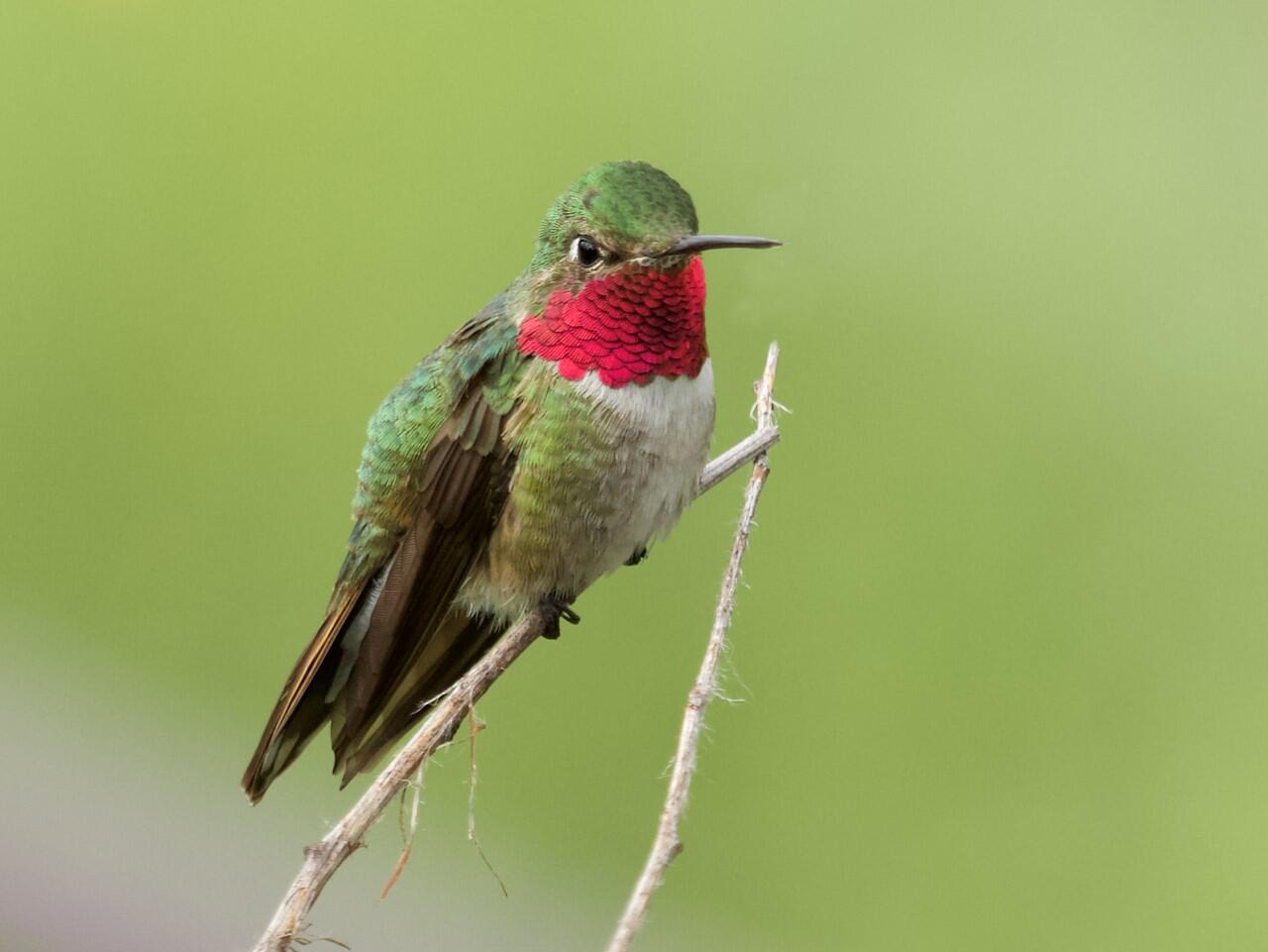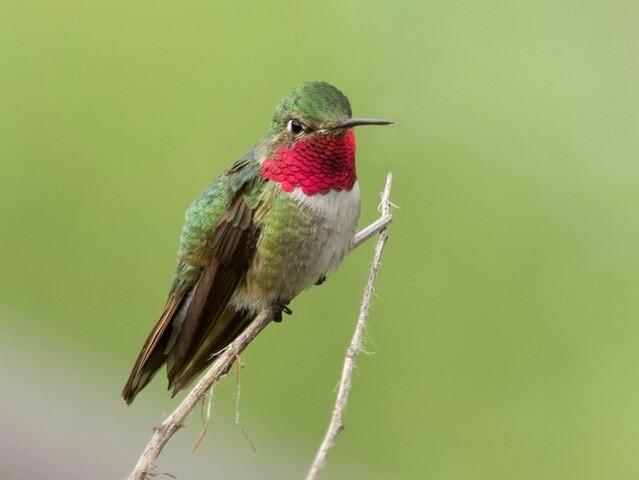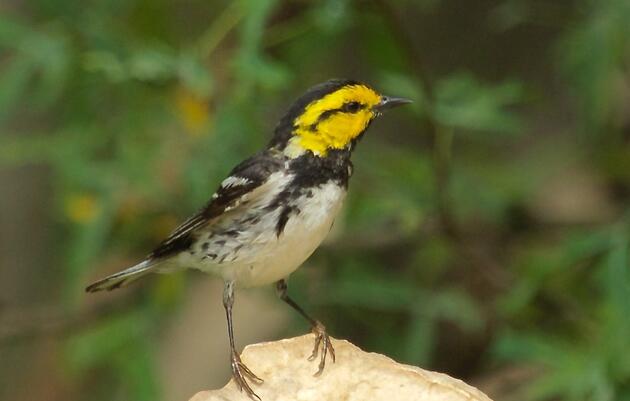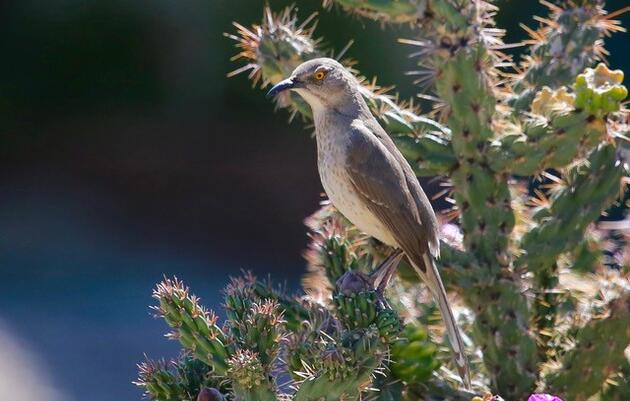By Tom Taylor
Resident Birder, Santa Fe, NM
This column will take you on a virtual tour around the country during the spring songbird migration. The story begins in the southwestern part of the US, where the author resides in Santa Fe, NM. For more than ten years each spring, he has taken at least one photographic outing to another part of the country to follow the arrival of the neotropical migrants from Central and South America. This was in addition to changes seen in the local feathery inhabitants in Northern New Mexico. The reader can connect to future articles in the series using the linked references on the bottom of this page.
This post starts early in April, at a time when everyone is locked down due to the COVID-19 pandemic. And, as in every year, the birding community is on high alert to find the latest arrivals from the south. But there will be no major adventures this time around—making a cyber-review of things from past years the only consolation. So, this journal will do its best to keep folks entertained and informed with a broad view of what must be happening during the avian spring parade to the north. Thus commences my inaugural flight.
Although few summer newcomers are apparent in northern New Mexico at the moment, there have been reports of the first arrival of hummingbirds. The usual enthusiasts are already mixing their sugary potions and have their hummingbird feeders at the ready. In northern New Mexico there are two nesting species of hummingbirds: the Broad-tailed and the Black-chinned. Both these species arrive from Central America and will spend their time nesting until sometime in June.
Perhaps the first realization that hummingbirds have arrived is when one hears the rapid trill produced by the wings of a male Broad-tailed Hummingbird. And these males are a joy to behold, after the somewhat colorless winter months, as they flash their iridescent reddish gorget (neck band) in the bright sunlight.
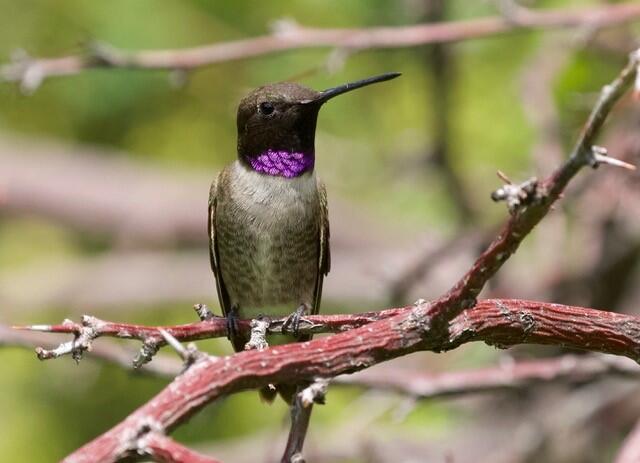
The male Black-chinned Hummingbird, on the other hand, is equipped with an iridescent purplish band at the base of its neck, the actual chin always being entirely black. When the iridescence disappears, both these hummingbird species are left with just a darkened color from the underlying feather pigment composition. The “extra” iridescent colors are a result of a microstructure in the top layers of the feathers that are able to select a portion of the “rainbow” of colors in the white sunlight. This means there is a controlled spacing to fractions of a micron (produced by air cavities). A finer spacing produces the purple iridescence, while a somewhat larger spacing reinforces the reddish color. (Purple light has a shorter wavelength than that of red light). The flashing of the gorget colors is dictated by a rather narrow geometric relationship between the observer, the feathering, and an appropriately bright light source.
The photos below show the switching of the iridescence from bright to almost none for a Broad-tailed Hummingbird as it changes its head position.
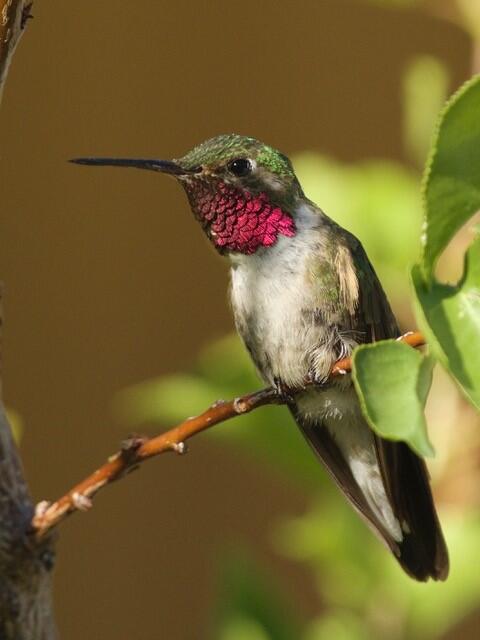
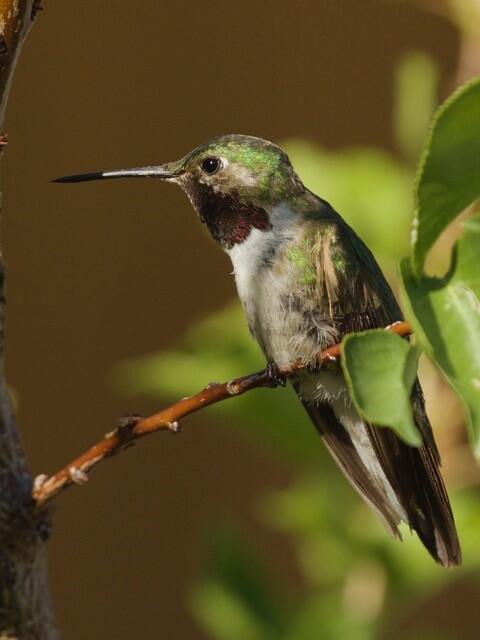
Of course, all the flashing and heroic flying done by the male hummingbirds is intended to attract a much less colorful female—who may appear unaffected at the sidelines, but surely has a very discerning eye for the type of male that she will take as a partner.
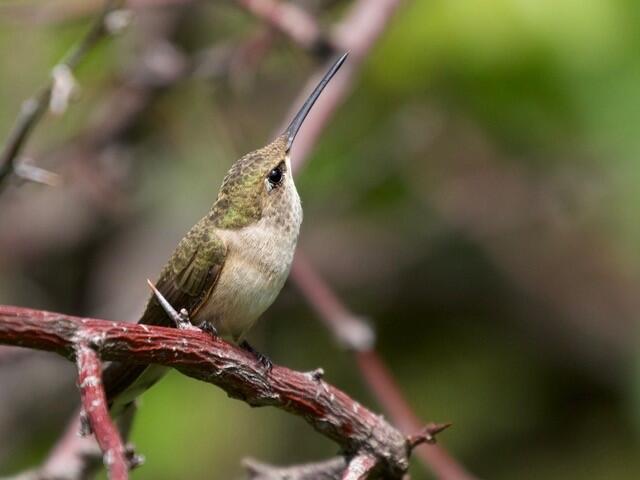
Once they are paired up, nest building commences using spider silk, plant down, and gossamer, for example. The nests are miniature - no more than two inches diameter. The web-like material allows the nest to expand as the nestlings increase in size. As mentioned before, the fledglings begin to appear around the area’s feeders in a June timeframe - just as the notoriously aggressive male Rufous Hummingbirds arrive after mating in the northwest part of the country and western Canada. They will be discussed in the future.
It would be a major oversight not to mention the synergistic relationship that hummingbirds have with flowering plants. In their desire to sip the nectar from flowers, they unwittingly are a key factor in pollination. The two aerial photos below show hummingbirds suspended in a flowering display.
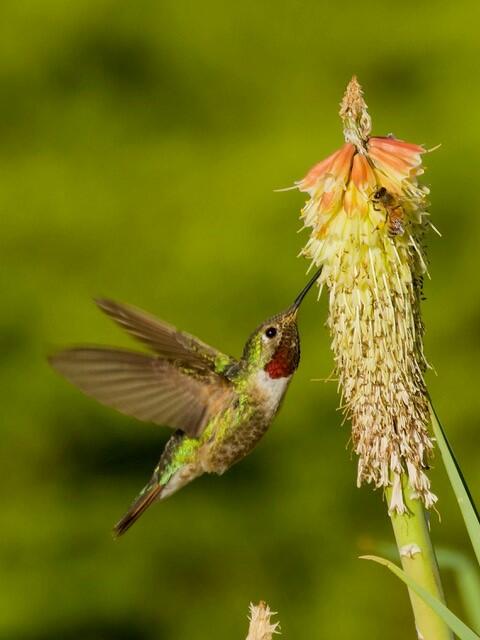
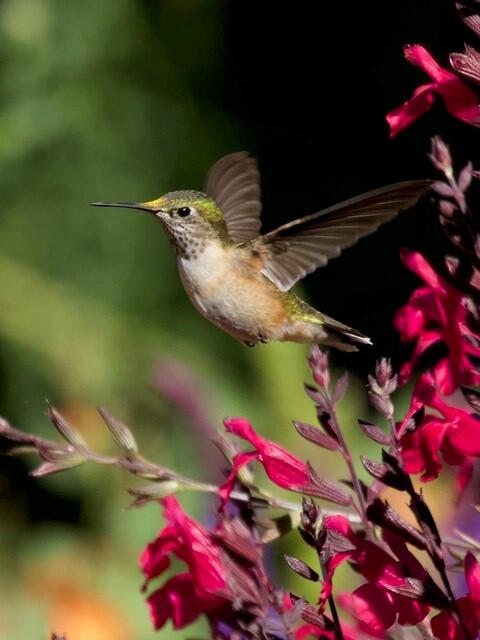
In mid-April, the cyber-tour will take a required visit to the Texas coast. The author is not sure how all this will develop, but there will certainly be plenty of time given the situation these days!

